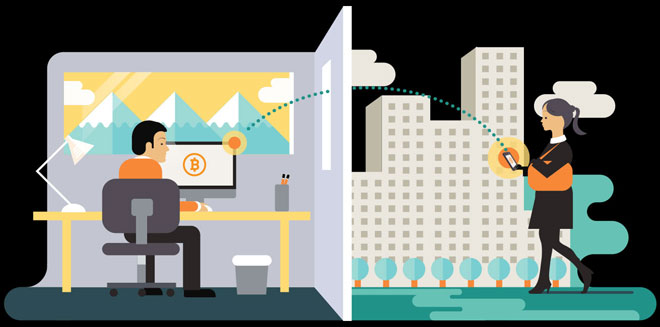Bitcoin is a decentralised peer-to-peer digital currency and payment network. (AP)
I E Muhammad Zulqarnain Zulfi : New Delhi, Thu Dec 05 2013, 10:32 hrs
Digital currency Bitcoins were in the news recently after James Howell, an IT worker from Newport, Wales, discovered that he had accidentally thrown out a hard drive containing 7,500 bitcoins -- now worth almost $8 million.
Howell obtained the bitcoins in 2009 for almost nothing. When he discarded his hard drive last July -- now buried in a Newport landfill the size of a soccer field -- the bitcoins were worth nearly $9,00,000. Today, the value of one Bitcoin has soared to over $1,000.
"Bicoins are wonderful idea of alternate money. Bitcoin is a digital money so no middlemen, no bankers make it more safer and convenient. All we have to do is solve complex mathematical problems,"explains Callmus Jones, one of the early miners of this crypto-currency.
What is Bitcoin?
Bitcoin is a decentralised peer-to-peer digital currency and payment network. But unlike traditional currencies, this one doesn't have a reserve. Instead, Bitcoin relies on a sort of honour system, and is traded on the web. According to the Bitcoin website, Bitcoin is free from the highs and lows of inflation, interest rates and market fluctuations, and its value is determined by the number of bitcoins in circulation -- that number is capped at 21 million.
How does it work?
According to the Bitcoin website, "Bitcoin is nothing more than a mobile app or computer program that provides a personal Bitcoin wallet and allows a user to send and receive bitcoins with them."
Bitcoins are typically bought through an exchange. The process involves setting up an account, then transferring funds into the account in order to start buying bitcoins. Bitcoins can also be exchanged in physical form through the Casascius coin, each of which is one digital Bitcoin.
Individuals can acquire bitcoins through:
Payment for goods and services
Purchasing them at a Bitcoin exchange
Exchanging Bitcoins with other individuals
Earning Bitcoins through competitive mining (a process whereby users create money through computing: users donate their computer power to Bitcoin so it can be used to solve complex mathematical problems required to validate transactions. When a problem is solved, bitcoins are issued).
The world's first Bitcoin ATM went live in a downtown Vancouver shop in October this year, allowing people to exchange cash for the digital currency. Approximately 20 businesses in Vancouver now accept Bitcoin.
In November, British billionaire Sir Richard Branson's commercial flight company Virgin Galactic announced it started accepting the digital currency for its Virgin Galactic flights to space. And on November 28, University of Nicosia, Cyprus' largest private university said it will start accepting Bitcoin for tuition fees -- the first university to do so.
Advantages?
Efficiency: Money can be sent and received instantly anywhere in the world, at any time, without a bank or middleman.
Low fees: Payments are processed with either no fees or very small fees.
Privacy: Transactions do not contain users' personal information, offering stronger protection against identity theft.
Control: Users are in full control of their transactions.
Transparency: All information on transactions is available in the database.
Risks?
Because Bitcoin isn't backed by a mint, transactions are not subject to the same regulations as other currencies. While every single transaction made using Bitcoin is posted publicly, the identity of the user remains anonymous -- making it hard to track perpetrators in the case of theft.
The now-defunct online drug market Silk Road was an early driver in Bitcoin's growth, taking advantage of the currency's ability to provide anonymity to users.
But according to the Bitcoin website, the most common vulnerability is user error. Similarly to physical cash stored in a digital form, Bitcoin wallets that store private keys can be accidentally deleted, lost or stolen.
Live: Bitcoin exchange rate








